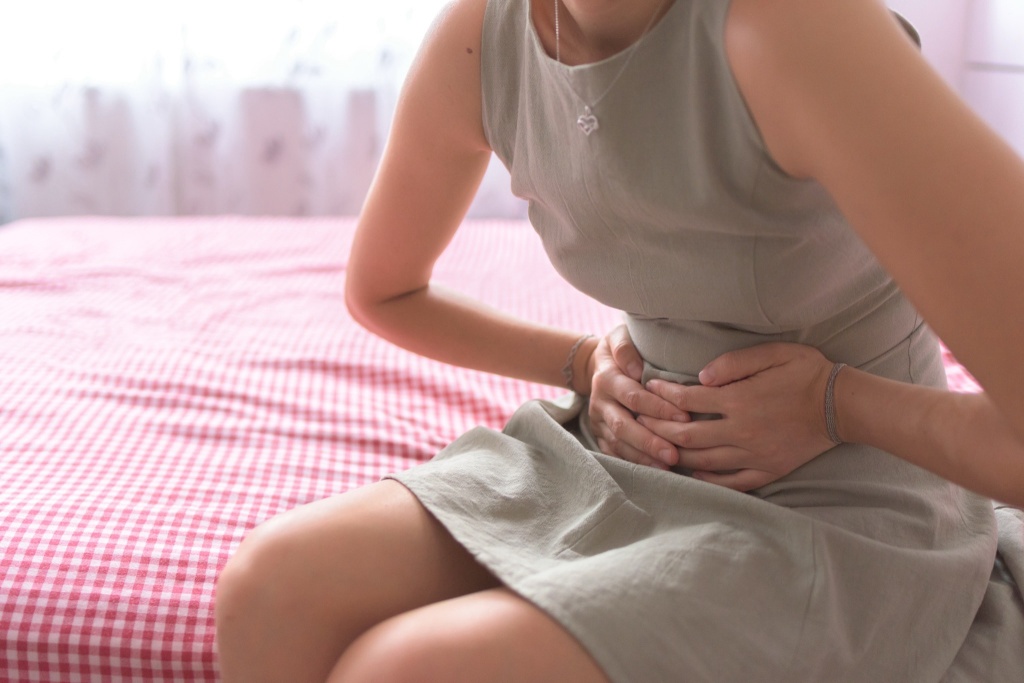Can cannabis help with your period pain?

Research into women’s health is grossly underfunded, and, because of federal regulations, medical cannabis research is extremely complicated to conduct. Despite these hurdles, there is a growing body of evidence, both anecdotal and scientific, to suggest cannabinoids as an aid for menstrual symptoms or “period pain.”
Realm of Caring is a nonprofit dedicated to cannabis research and education. The organization maintains the largest research registry in the U.S. and publishes studies on cannabinoid therapies. In this Q&A, Sasha Kalcheff-Korn, Executive Director of Realm of Caring, offers an update on where the research on cannabinoids and menstruation stands and how people with periods are using cannabis.
RELATED: New cannabinoid discovered—and it has big potential
Editor’s Note: The answer to this question is meant to supplement, not replace, advice, diagnoses, and treatment from a healthcare provider. Always consult a medical professional when using cannabis for medicinal purposes, and do not disregard the advice of your healthcare provider because of anything you may read in this article.
Can cannabis help with menstrual symptoms?
Cannabis has an incredible potential to help alleviate menstrual symptoms. Cannabinoids from the cannabis plant interact directly with the endocannabinoid system (ECS), which is the body’s largest neurotransmitter system. It helps to regulate critical functions like sleep, mood, stress, pain, and inflammation. If we are considering common menstrual cycle symptoms: cramps, bloating, headache, fatigue, nausea, mood imbalances, breast tenderness, there is a lot of anecdotal evidence to suggest that cannabinoids may play a part in providing relief to every one of those symptoms due to their actions.
It might be helpful to think of cannabinoids as molecules that aid the ECS in restoring balance in the body. During menstruation, there are a lot of factors that can make us women feel out of balance; to be able to restore balance during that time is the most some could ask for!
What research is available to support the connection between cannabis and managing menstrual symptoms?
There is a lot of anecdotal evidence of cannabis use for managing menstrual symptoms. It has been said that Queen Victoria used a cannabis tincture for menstrual pain in the 19th century, as her physician wrote about the many therapeutic uses of cannabis.
However, in the last few years, research on this topic has grown significantly, given the promising applications for managing pain-related symptoms. It is estimated that up to 95 percent of women of reproductive age globally experience dysmenorrhoea, which is a term used for pain during menstruation.
RELATED: Weed might boost your brain — here’s why
This is a significant global health problem, where most women do not seek medical assistance or treatment because it has been socially normalized or dismissed. However, pain that impacts quality of life and daily functioning is not normal, and treatments with fewer side effects are needed. This is where research on medicinal cannabis comes in, and while the literature is growing, what currently exists is promising. Current studies highlight pelvic pain relief, lessened stress as a result of improved pain or mood imbalances, and less reliance on over-the-counter and/or pharmaceutical pain relievers.
What other research would you like to see done to further explore these connections?
It would be great to have more research that dials into therapeutic levels of cannabinoids for dosing. Full-spectrum cannabidiol (CBD), for instance, shows more efficacy with day-to-day consistent dosing. Therefore, it would be helpful for women and their practitioners to understand what that starting amount should look like for them and to realize that a full cannabinoid profile may be more beneficial. This also helps to move the policy conversation forward and advocate for medical providers to have these discussions with their patients as a first line of therapy.
RELATED: Cannabis may ease major public health crisis
The 2018 Farm Bill has given us federal allowance to access full-spectrum, CBD products that are not overtly psychoactive; however, there is a looming threat that these products could be taken away. If we had more research to support the medicinal value and safety of commercially available, quality products, then we could make them more widely available and secure for the millions of women who could find benefit for their symptoms.
What treatments are currently available?
Current treatments include prescribed antidepressants and pain relievers, as well as over-the-counter NSAIDs (nonsteroidal anti-inflammatory drugs). Hormonal contraceptives to stop ovulation are also widely prescribed. However, current treatments may also come with their own side effects, including: gastrointestinal discomfort, nausea, vomiting, drowsiness, headaches, decreased libido, and unintended weight gain.
What else should our readers know?
If you wish to explore this option for your overall health and well-being, it is recommended that you speak with your doctor. Realm of Caring also has a free one-on-one support line to offer guidance on how to choose a quality product, how to talk with your doctor about cannabis use, and how to find success safely. Most importantly, know that you aren’t alone! There are several quality products and companies aimed at supporting women on their menstrual health journey with cannabis.
*This article was submitted by a guest contributor. The author is solely responsible for the content.